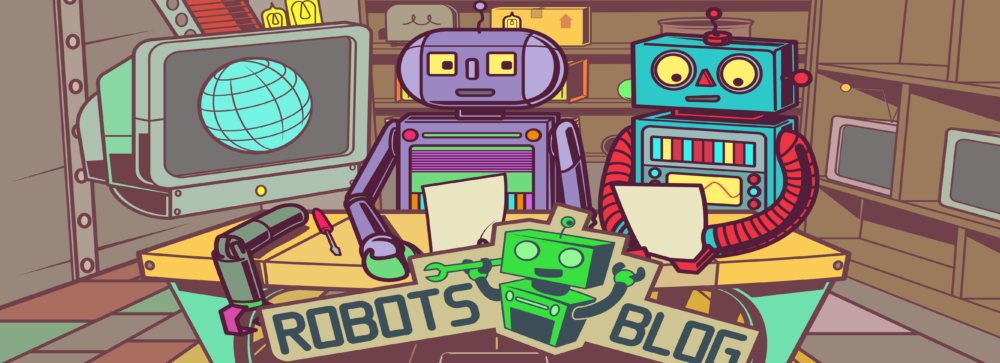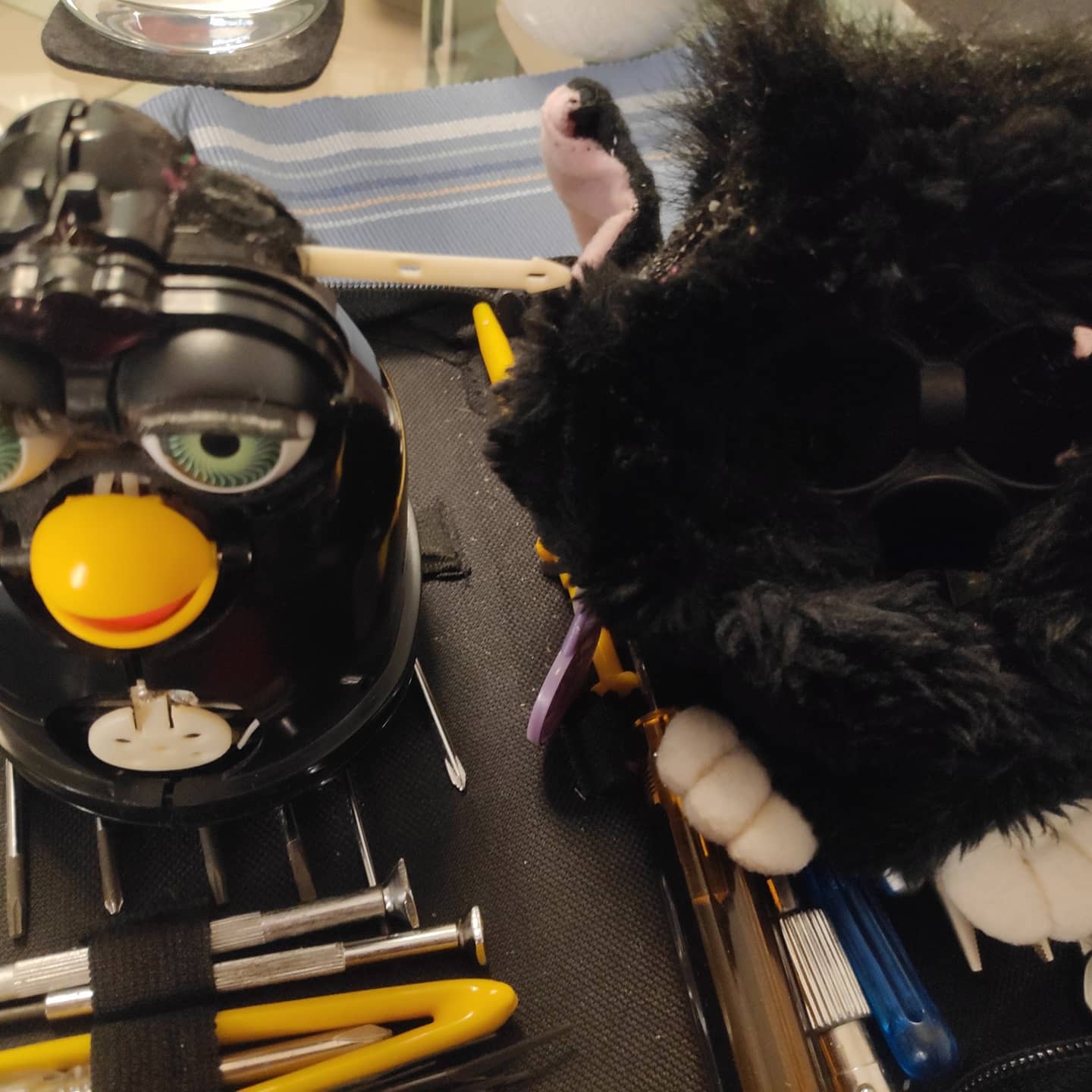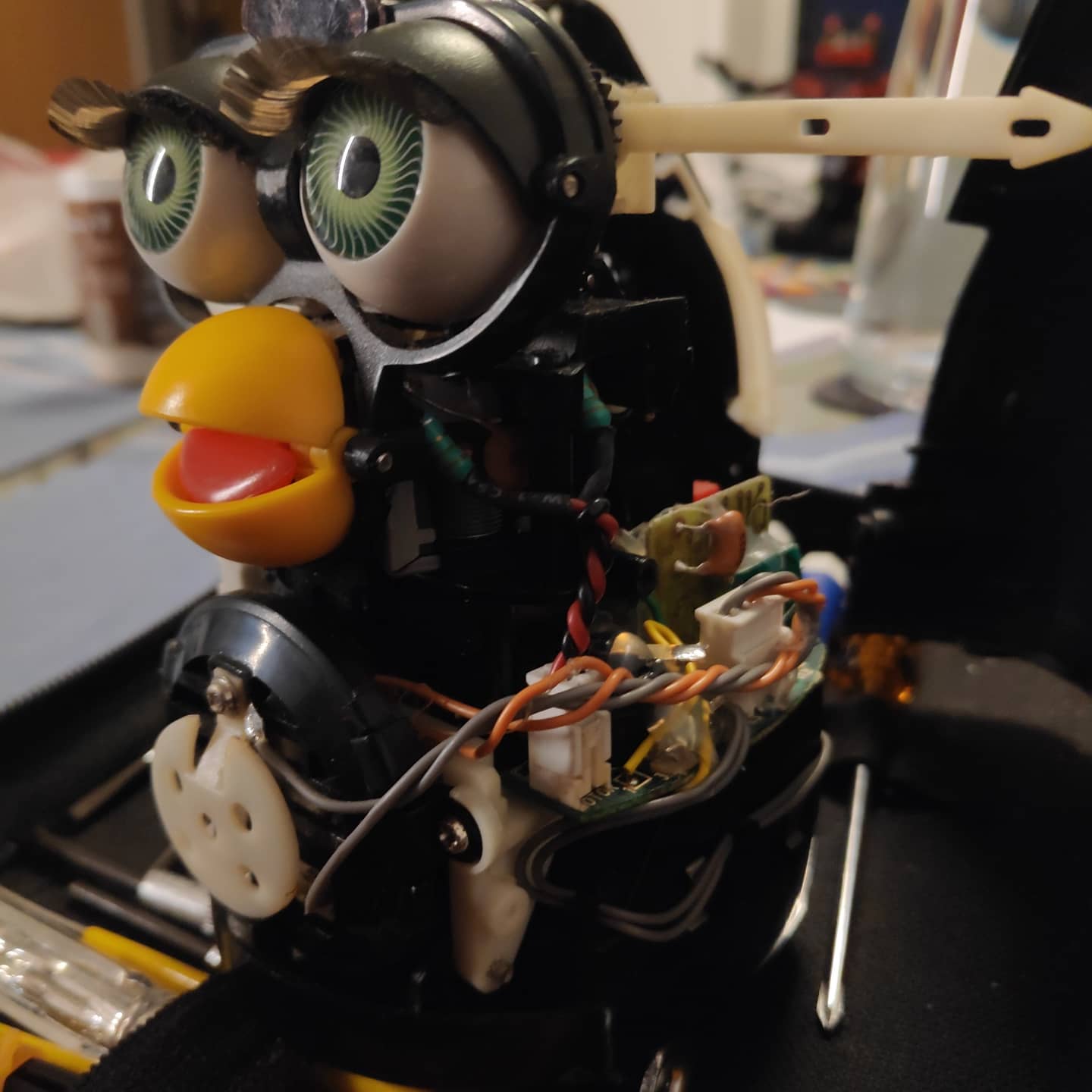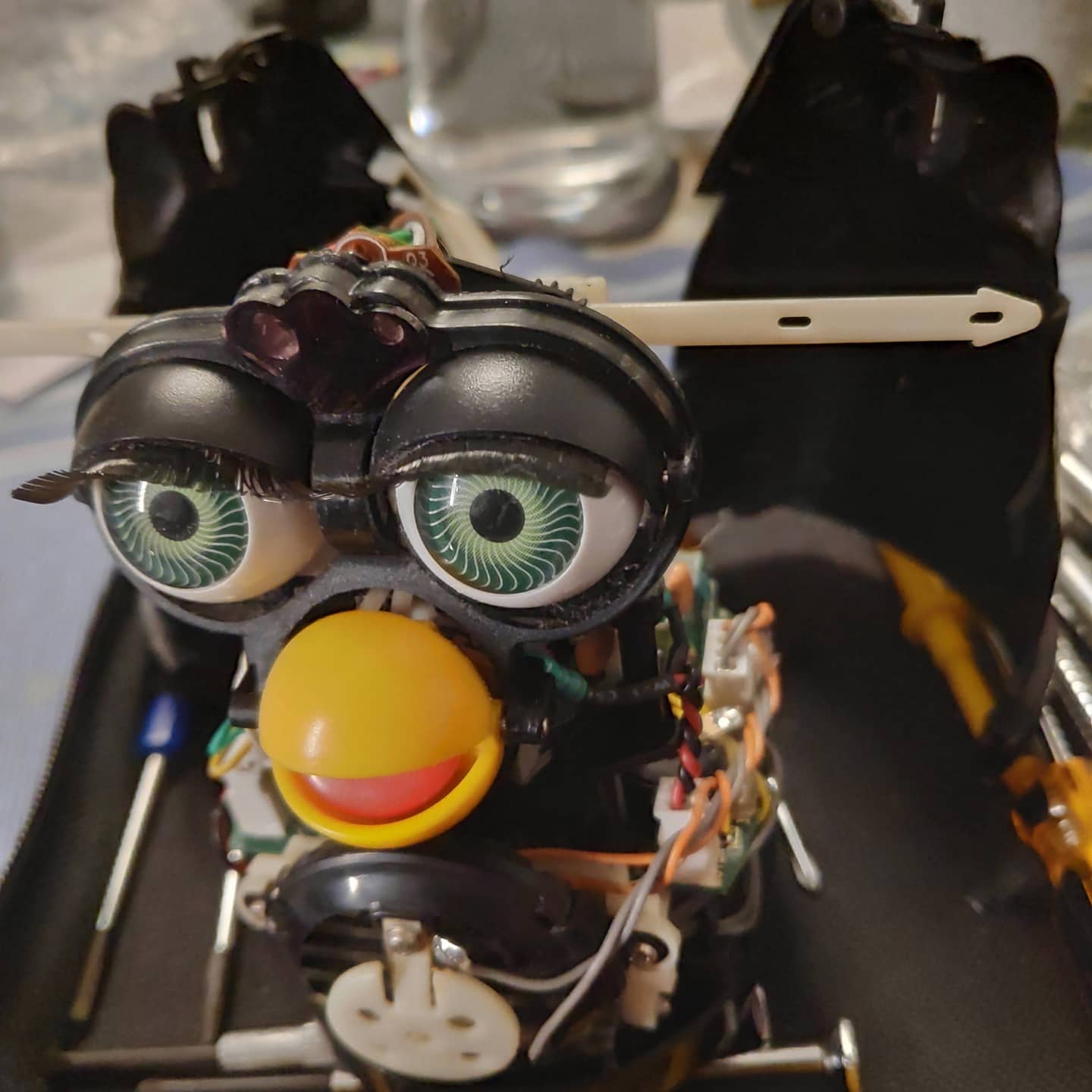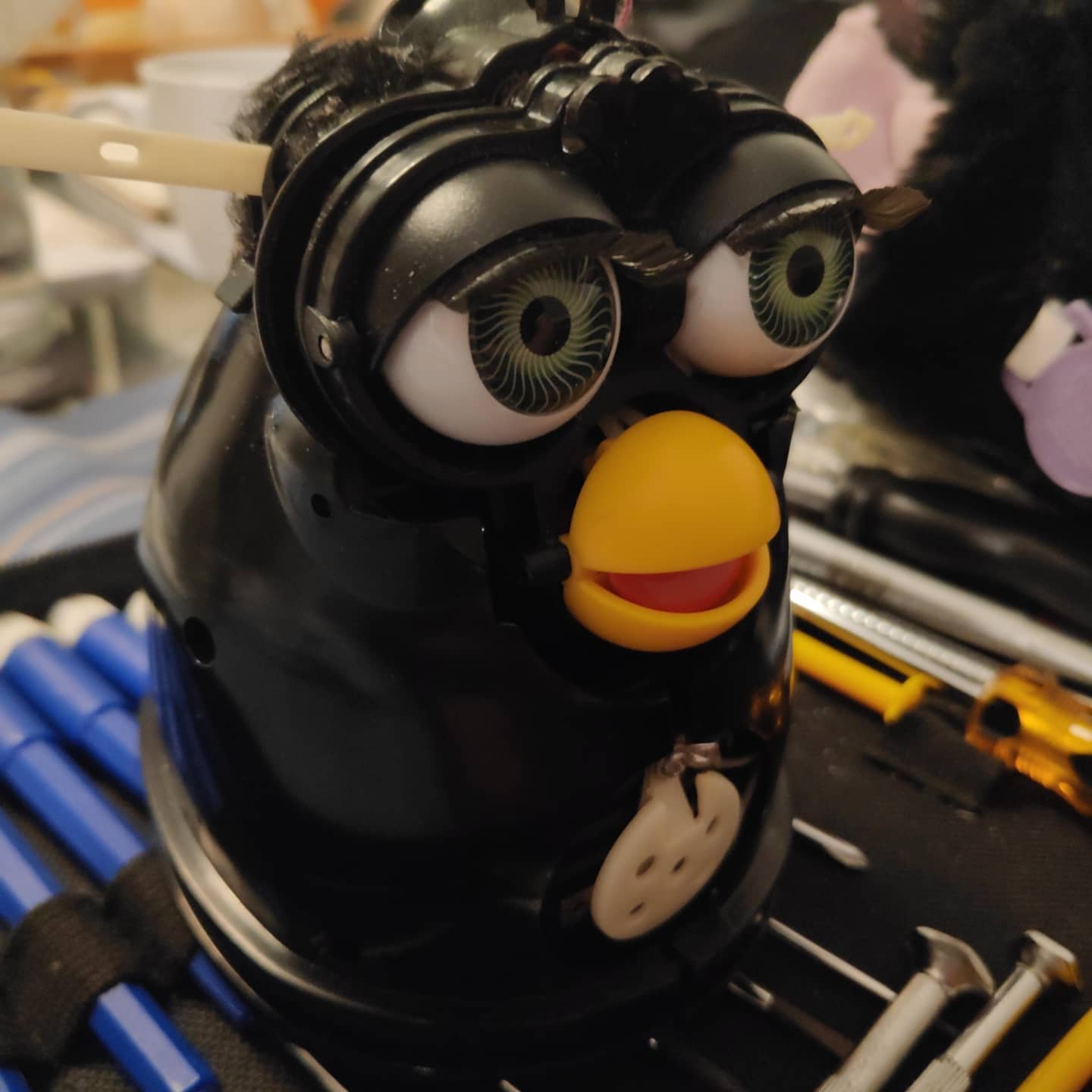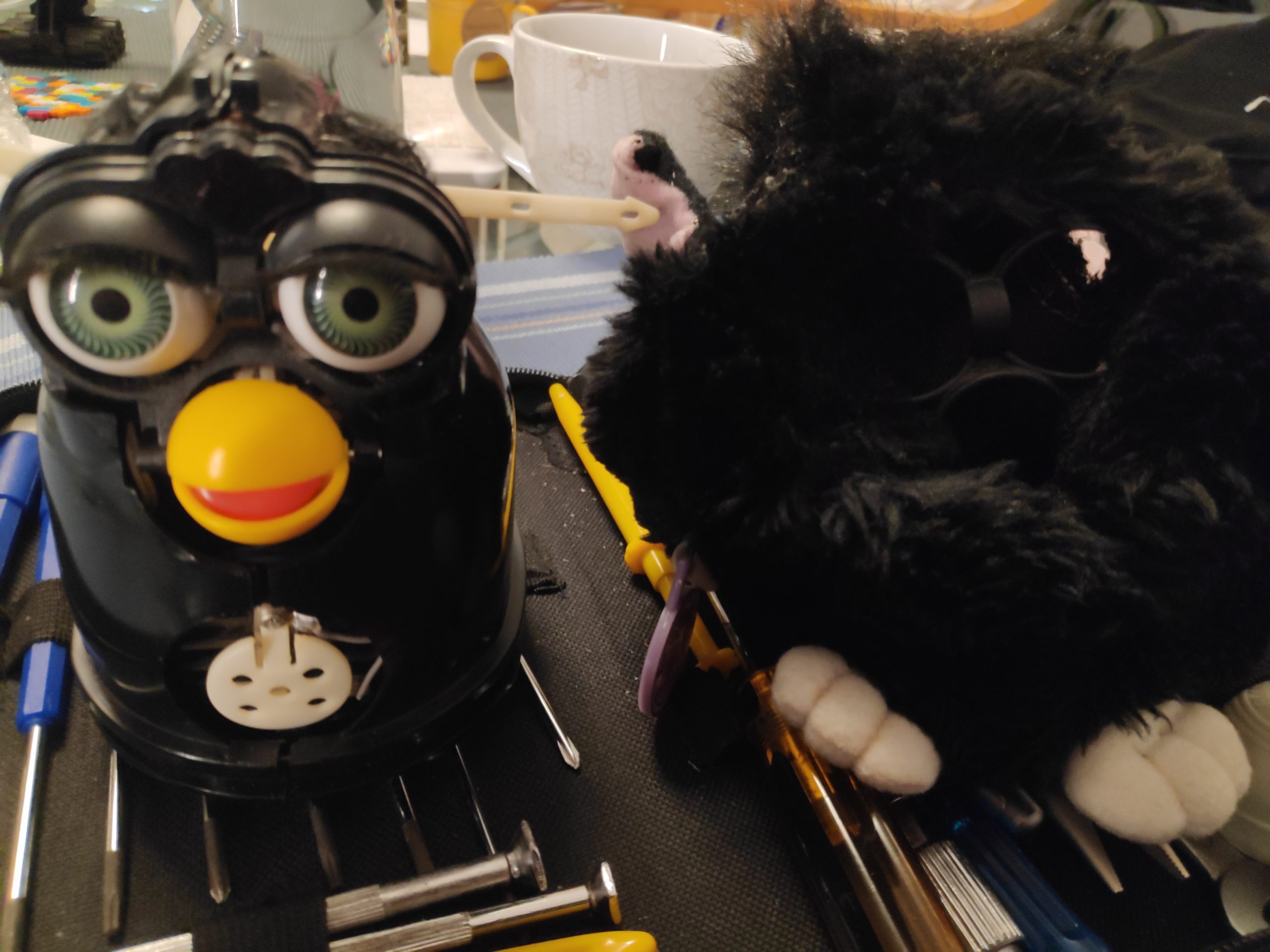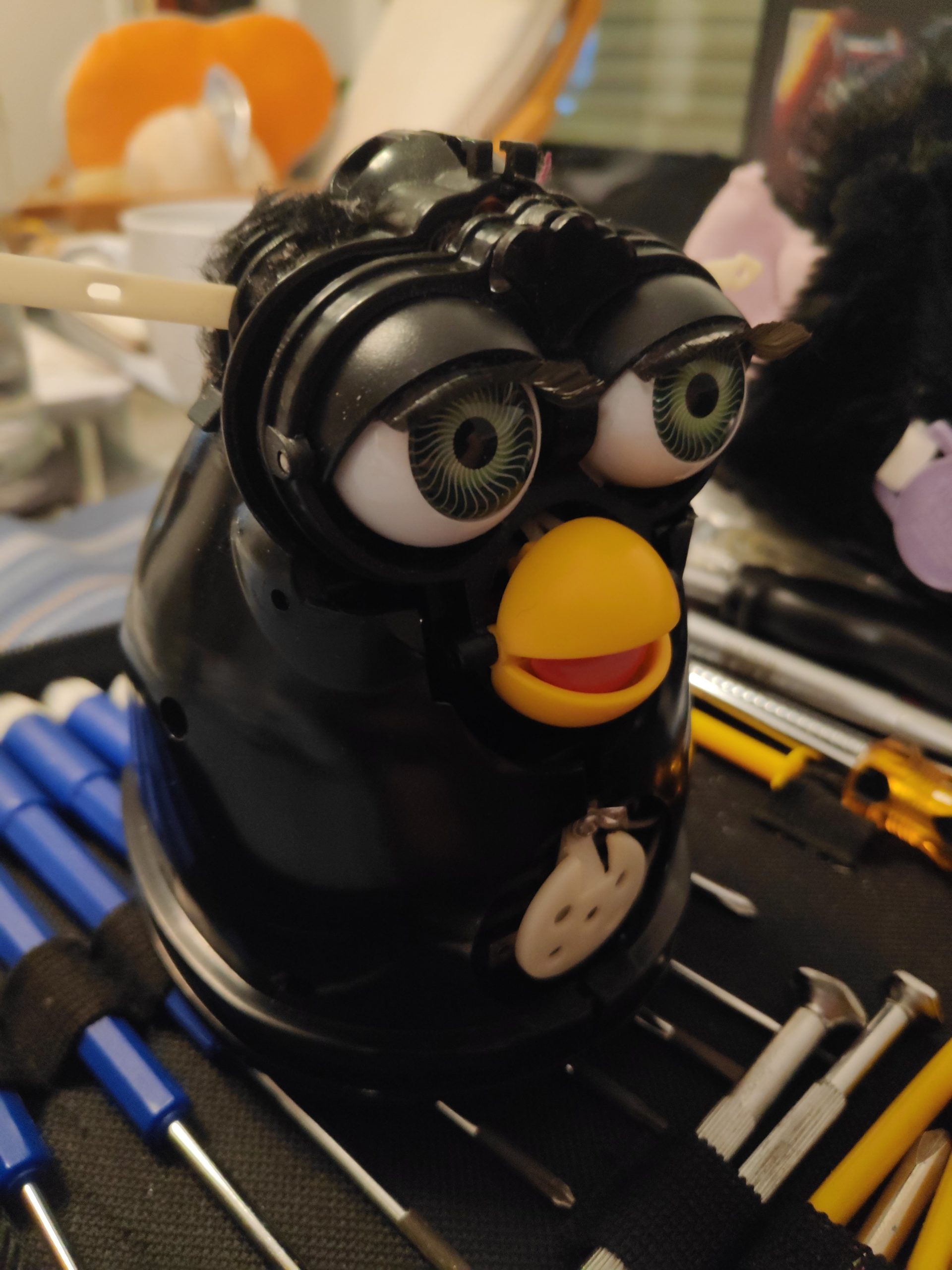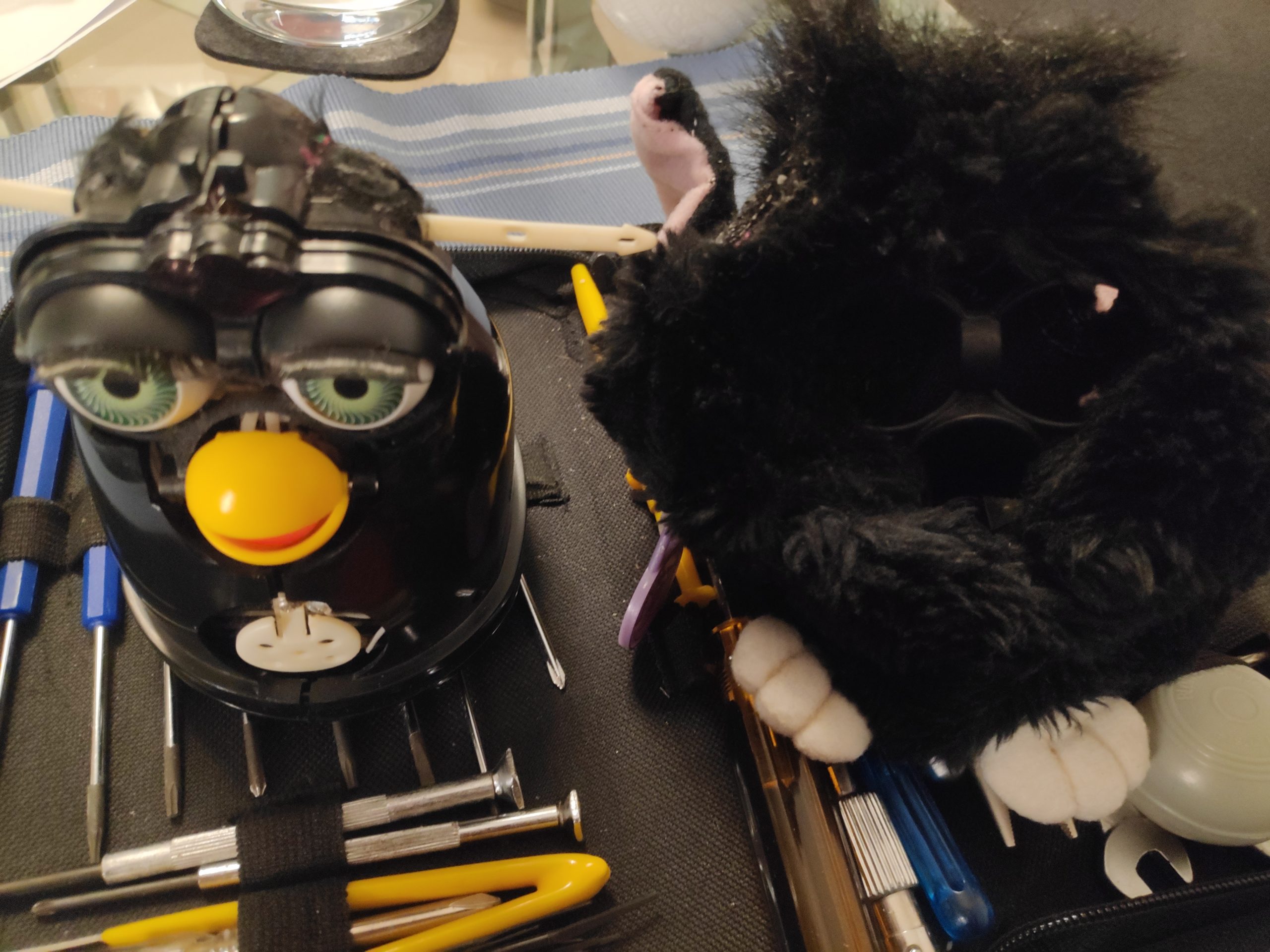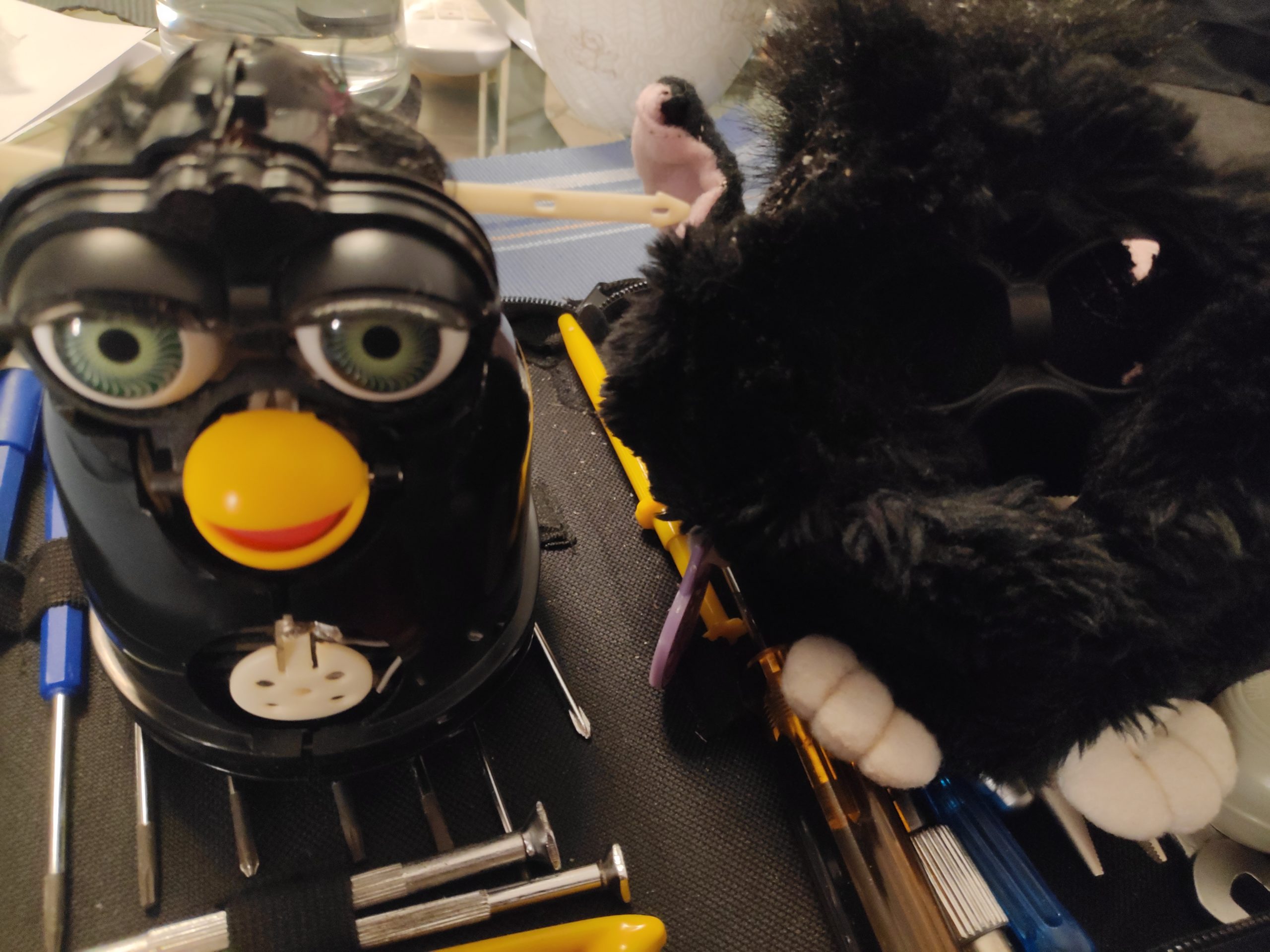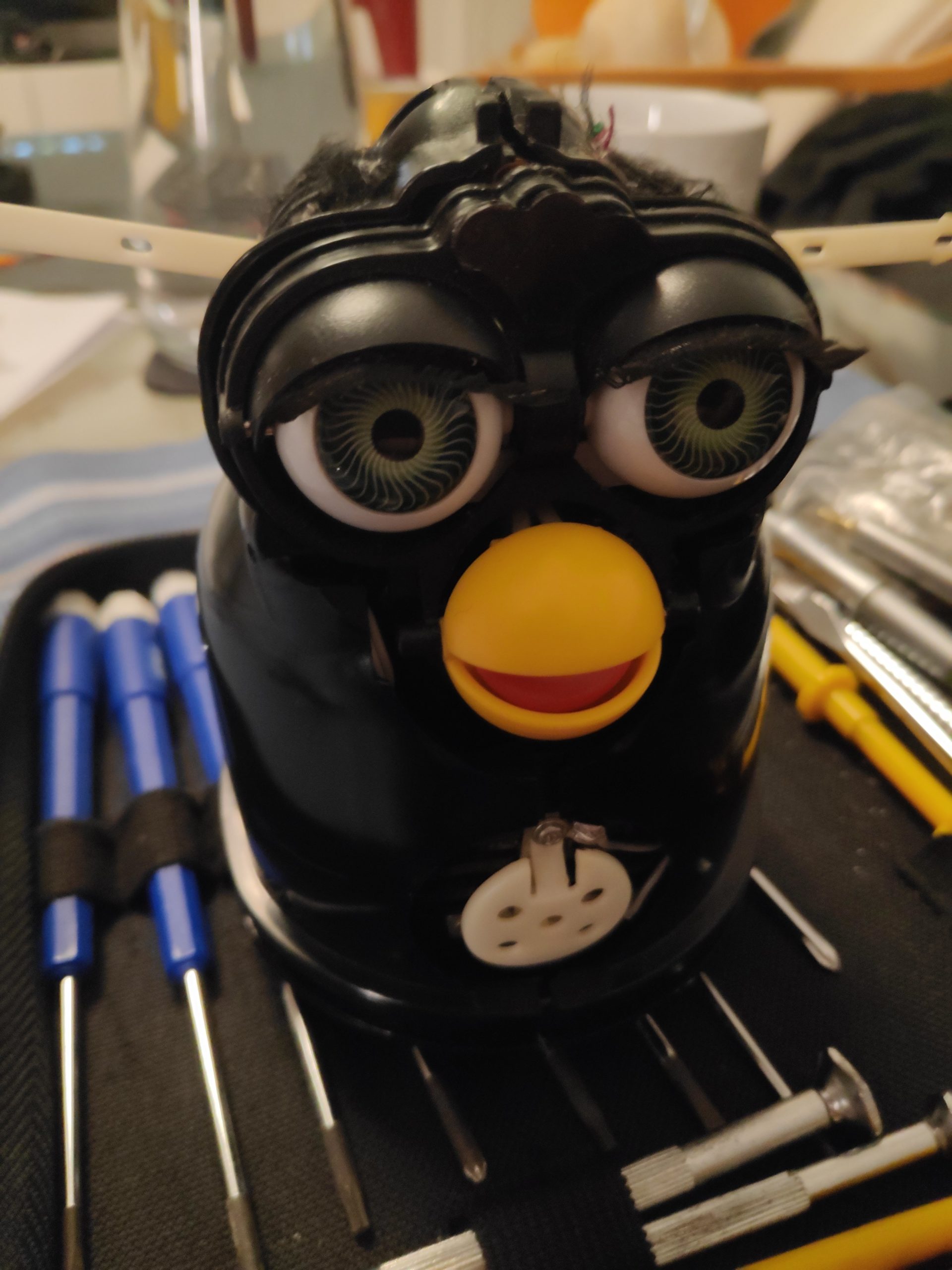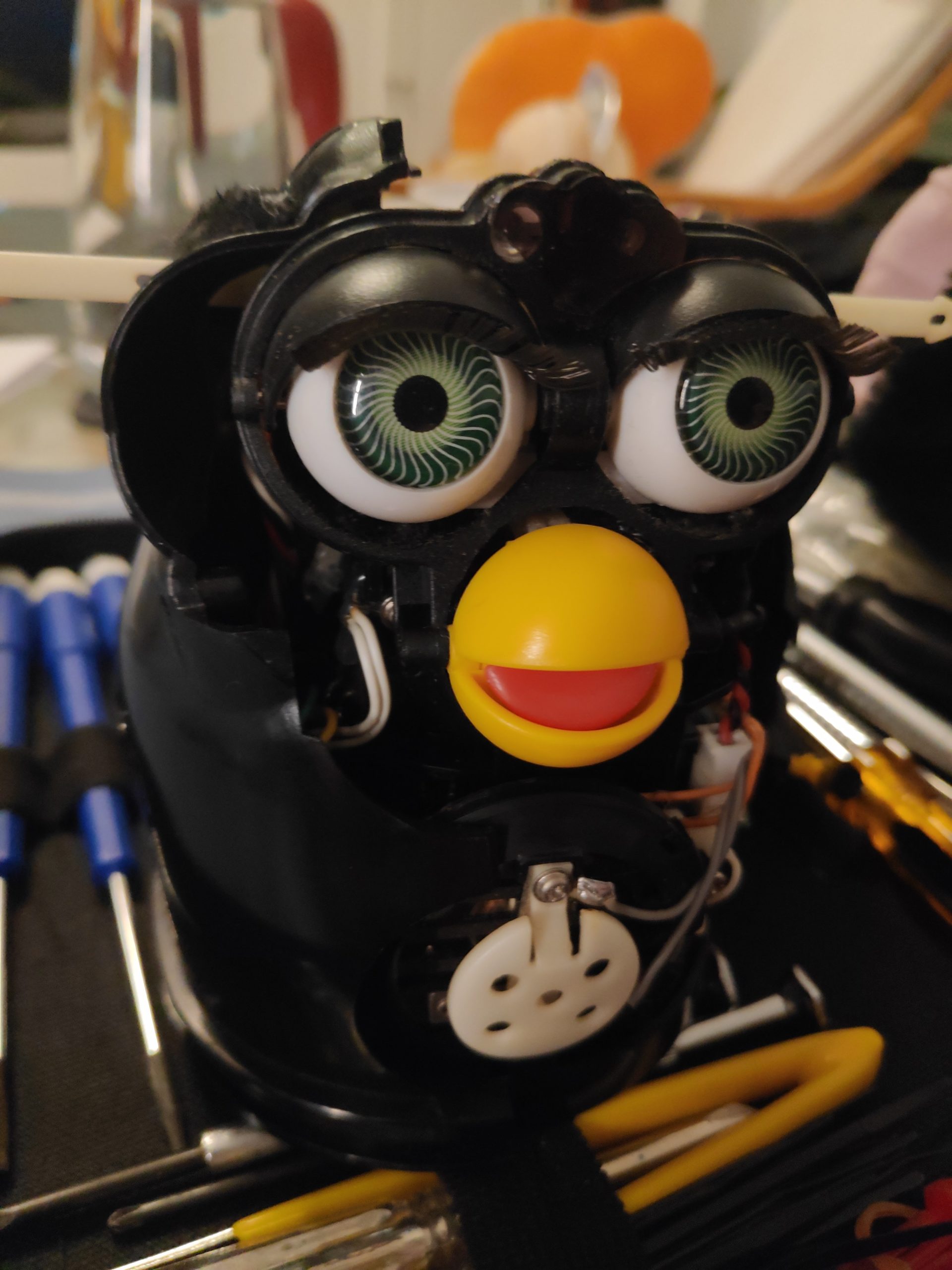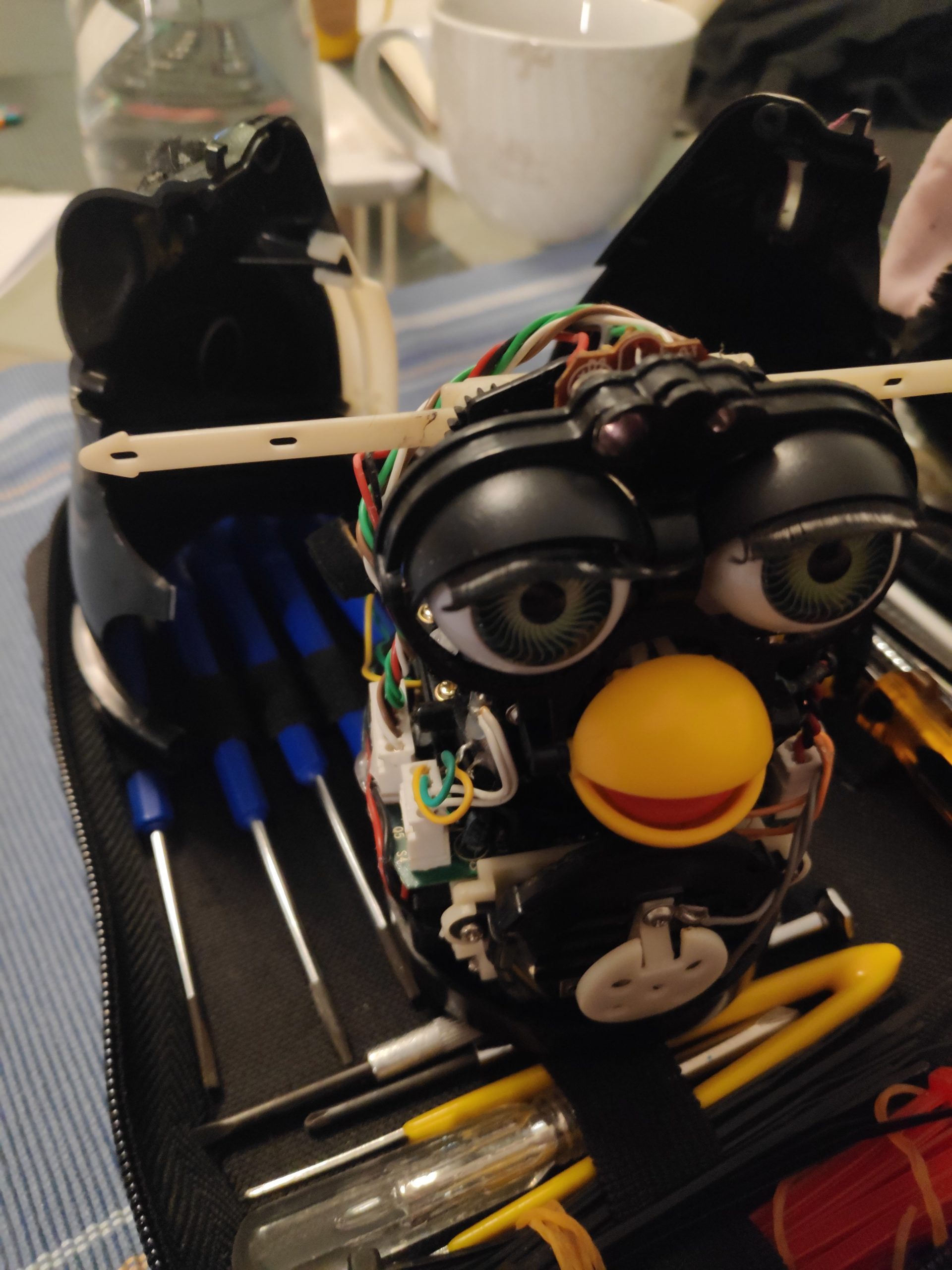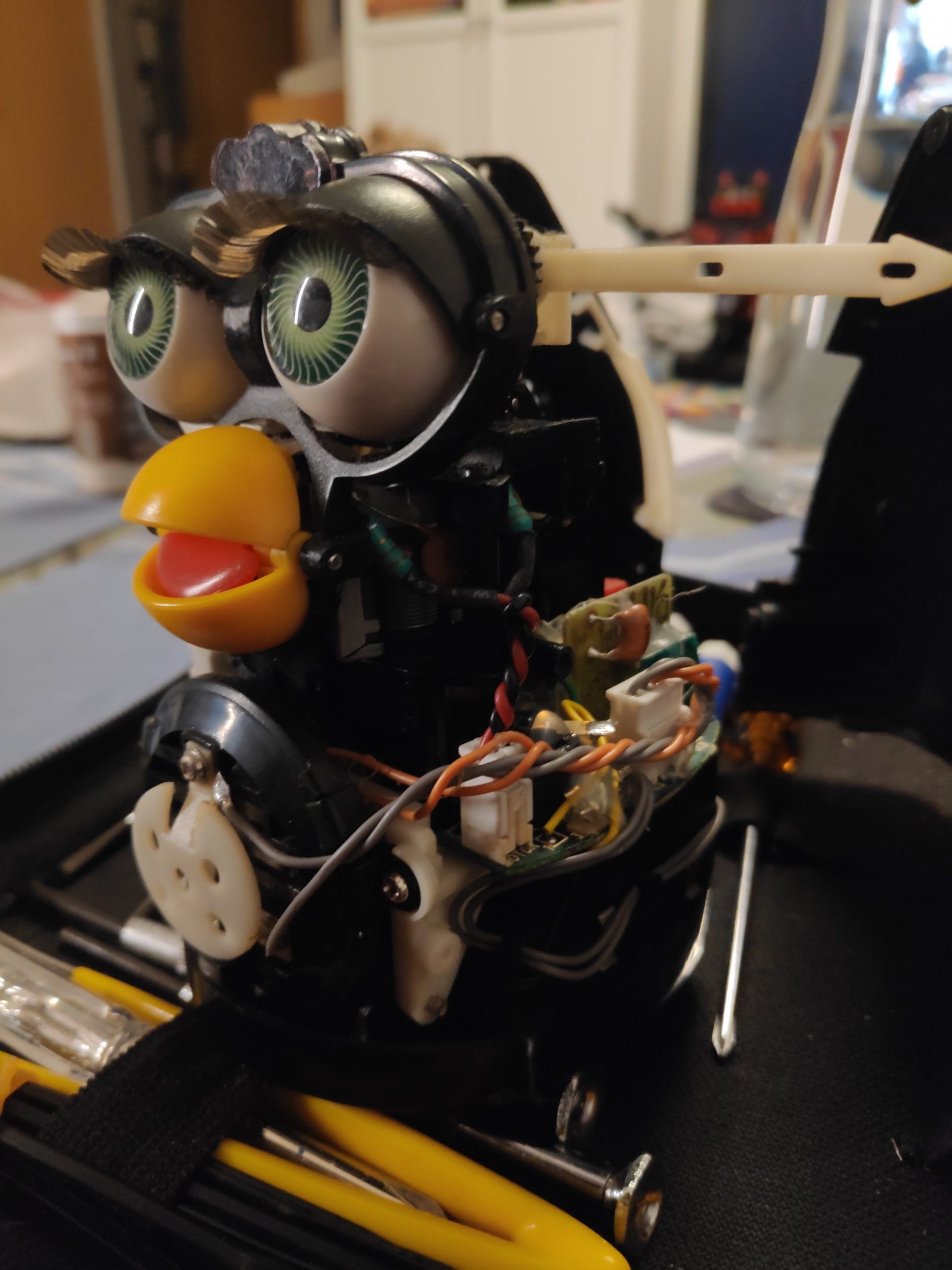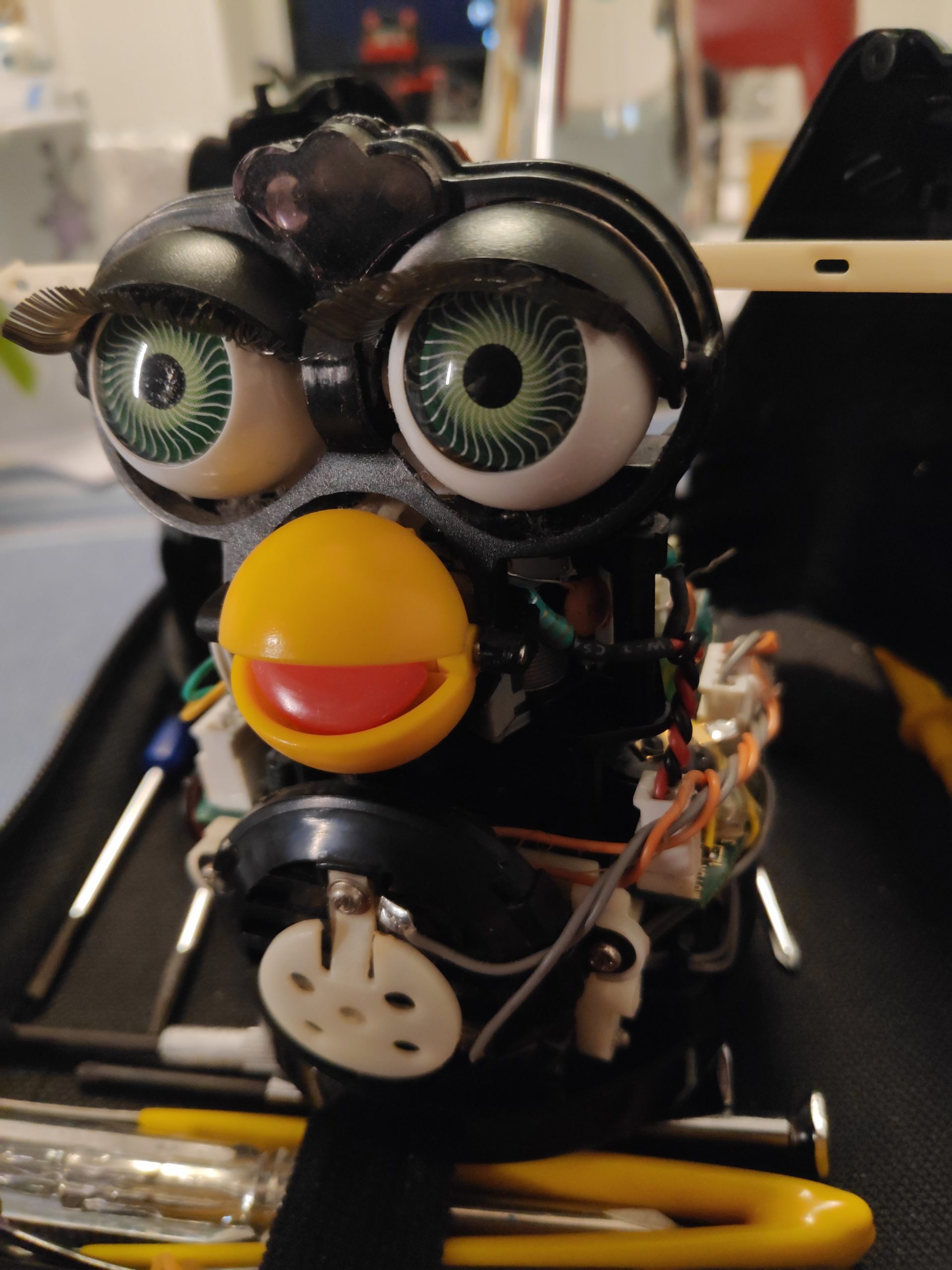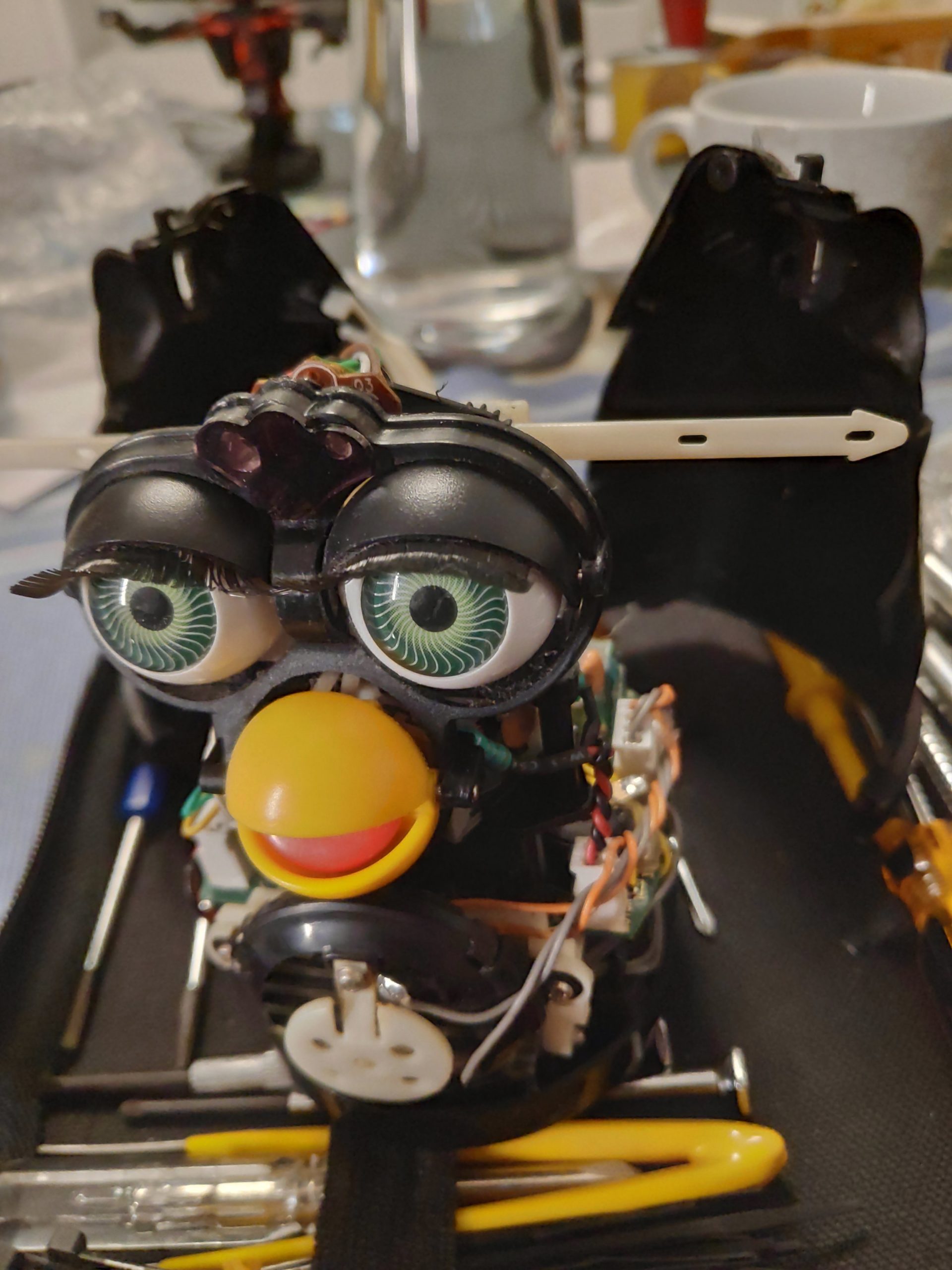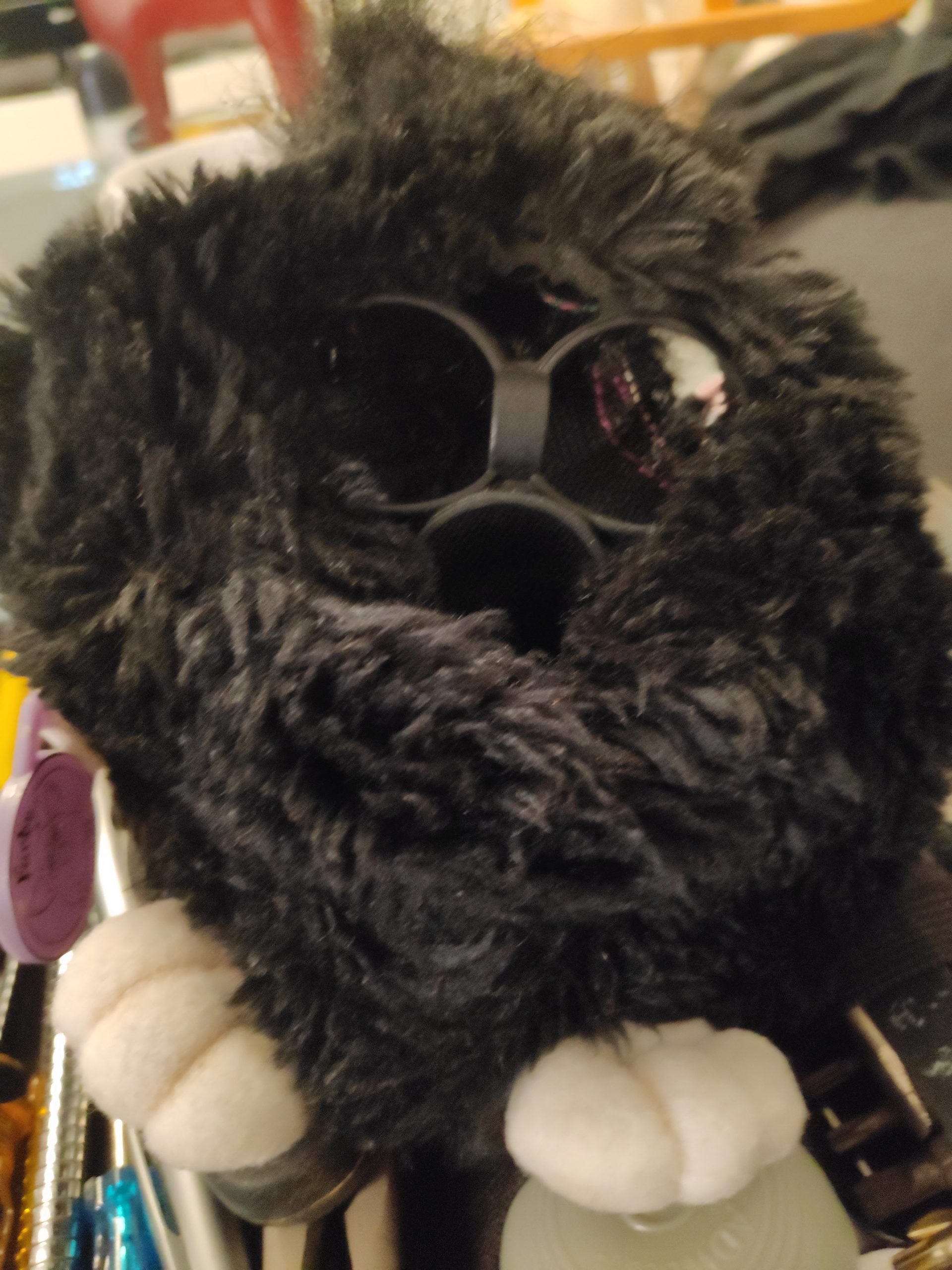Ever wondered what one of my favorite robot looks like from the inside? Here are some pictures of the first generation Furby with his fur taken off, exposing his electronics and internal components.
Archiv der Kategorie: Hardware
Tech Vision: How Boston Dynamics Built The Most Advanced Robot
The following video has been uploaded to YouTube by tech vision. I think it has all the information you need about Boston Dynamics robots and is therefore a must-see.
‘BATTLEBOTS: BOUNTY HUNTERS’ to launch on DISCOVERY+ with the top robot competitors smashing it out
BATTLEBOTS: BOUNTY HUNTERS’ Premieres Monday, January 4, on the Launch of Discovery’s Streaming Service Discovery+
(LOS ANGELES) – In the BattleBots universe, from the moment you start building a robot, everyone dreams of a chance to fight against the best in the world — the legends that define the sport. Rarely does David get to face Goliath. Until now… BATTLEBOTS: BOUNTY HUNTERS, premiering Monday, January 4 on Discovery+, will bring the top robots from all over America to battle it out against a BattleBots legend in the ultimate robot combat.
In BATTLEBOTS: BOUNTY HUNTERS, the sport has some of the top robot legends including Tombstone, Bronco, Witch Doctor, Son of Whyachi, Beta and Icewave. Each of the them have many knockouts and have smashed countless competitors before them.
In each episode, challengers will compete for the right to become the Bounty Hunter and fight a Legend. The prize: a unique place in BattleBots history, and the major share of a $25,000 cash prize payout in every episode.
Like in the regular season of BattleBots, each episode highlights the design and build of the competing robots and profiles the teams behind them. Competitors come from all types of backgrounds – from families to university students and everything in between. Every machine is homemade and constructed from a variety of materials with custom-built weaponry to destroy the competition.
In addition to watching BATTLEBOTS: BOUNTY HUNTERS on Discovery+, viewers can join the conversation on social media by using the hashtag #BattleBots and following Discovery on Facebook, Twitter, and Instagram. Fans can also use the BattleBots AR filter (WT) on Instagram, Facebook, and Snapchat to share which bot the randomizer selects for them.
BATTLEBOTS remains the most popular robotic combat sport in the world, created by Ed Roski and Greg Munson and now seen in over 150 countries. It is produced by BattleBots, Inc. and Whalerock Industries. Executive producers are Chris Cowan, Edward P. Roski (Trey), Greg Munson, Tom Gutteridge and Aaron Catling. For Discovery Channel, Scott Lewers, Joseph Boyle and Wyatt Channell are executive producers and Paola Espinosa is associate producer.
About Discovery Channel
Discovery Channel is dedicated to creating the highest quality non-fiction content that informs and entertains its consumers about the world in all its wonder, diversity and amazement. The network, which is distributed to 88.3 million U.S. homes, can be seen in 224 countries and territories, offering a signature mix of compelling, high-end production values and vivid cinematography across genres including, science and technology, exploration, adventure, history and in-depth, behind-the-scenes glimpses at the people, places and organizations that shape and share our world. For more information, please visit www.discovery.com.
About Discovery
Discovery, Inc. (Nasdaq: DISCA, DISCB, DISCK) is a global leader in real life entertainment, serving a passionate audience of superfans around the world with content that inspires, informs and entertains. Discovery delivers over 8,000 hours of original programming each year and has category leadership across deeply loved content genres around the world. Available in 220 countries and territories and nearly 50 languages, Discovery is a platform innovator, reaching viewers on all screens, including TV Everywhere products such as the GO portfolio of apps; direct-to-consumer streaming services such as Eurosport Player, Food Network Kitchen and MotorTrend OnDemand; digital-first and social content from Group Nine Media; a landmark natural history and factual content partnership with the BBC; and a strategic alliance with PGA TOUR to create the international home of golf. Discovery’s portfolio of premium brands includes Discovery Channel, HGTV, Food Network, TLC, Investigation Discovery, Travel Channel, MotorTrend, Animal Planet, Science Channel, and the forthcoming multi-platform JV with Chip and Joanna Gaines, Magnolia, as well as OWN: Oprah Winfrey Network in the U.S., Discovery Kids in Latin America, and Eurosport, the leading provider of locally relevant, premium sports and Home of the Olympic Games across Europe. For more information, please visit corporate.discovery.com and follow @DiscoveryIncTV across social platforms.
About Whalerock Industries
Whalerock Industries is a West Hollywood-based production and consulting company founded by Lloyd Braun. Its Whalerock Studios produces highly acclaimed and popular unscripted series, including BattleBots (Discovery), Hyperdrive (Netflix), Savage Builds (Discovery), and Ravi Patel’s Pursuit of Happiness (HBO Max). The company’s award-winning team of producers, digital product developers and marketers has created and operated multiple #1 direct-to-consumer apps and web properties with the world’s most influential celebrities and brands. Fans can join in the conversation by following BattleBots Facebook and Instagram.
e-spool flex für eine unterbrechungsfreie Panel-Zuführung an Industrierobotern
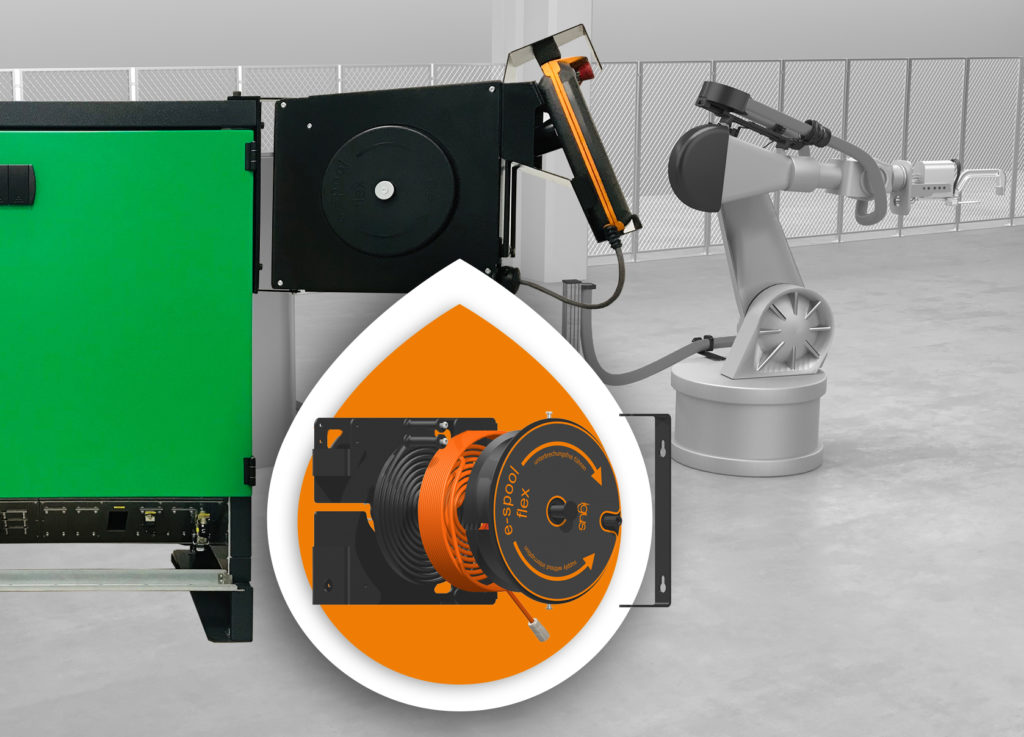
Robotik-Dienstleister ARAGON Industrieelektronik GmbH verwendet einen neuen schleifringfreien Kabelabroller von igus
Köln, 6. Januar 2021 – Sie sind die Schaltzentrale für den Roboter: Bedienpanels. Damit sie flexibel eingesetzt werden können, muss ihre Leitung nicht nur einige Meter lang, sondern auch beweglich und sicher verstaut sein. Hierfür hat igus die e-spool flex entwickelt. Die neue igus Kabeltrommel kommt ohne Schleifring aus und kann so selbst Bus-Signale unterbrechungsfrei führen. Die Leitung lässt sich auch einfach nachträglich in das System einsetzen. Vorteile, die den Robotik-Dienstleister ARAGON überzeugt haben. Er bietet als Service für seine Industrieroboter ein Kabel-Komplettset an, bestehend aus e-spool flex mit einer Standardleitung sowie einer vormontierten Panelhalterung.
Alten Robotern neues Leben einhauchen, das ist die Aufgabe der ARAGON Industrieelektronik GmbH. Der führende Anbieter für Industrierobotik bietet weltweit Lösungen rund um die Reparatur, Wartung, den Retrofit und das Tuning von Industrierobotern an. Die Kunden finden sich in kleineren Betrieben, die bis zu 10 Robotersysteme einsetzen. Aber auch größere Unternehmen und OEMs im Bereich Automotive setzen auf die Expertise des Robotik-Spezialisten. Speziell für den Einsatz an Bedienpanels suchte das Unternehmen nach einer praktischen Lösung für die Leitungen: „Wir sind stets bestrebt, die Sicherheit unserer Kunden durch innovative Lösungen zu gewährleisten. Bisher lag das Kabel immer auf dem Boden, wurde schnell beschädigt und stellte eine Stolperfalle dar. Daher waren wir auf der Suche nach einem Kabelaufroller, der unterbrechungsfrei, einfach und schnell nachrüstbar ist“, erklärt Iryna Geike, Global Country Manager bei ARAGON. Fündig wurde das Unternehmen bei igus. „Uns wurde das neue Kabelaufrollsystem e-spool flex vorgestellt und es hat uns direkt überzeugt“, erinnert sich Iryna Geike. Der wesentliche Vorteil der e-spool flex gegenüber anderen Kabelwicklern liegt darin, dass kein Schleifring zum Einsatz kommt. So können auch Medien, Daten und die Strom- und Signalversorgung des Not-Aus-Tasters in das System integriert werden. Bereits bestehende Panelleitungen lassen sich einfach in die Schneckenführung des Systems einlegen und werden automatisch aufgerollt. „Unsere Kunden erhalten nun für ihre Bedienpanels ein vormontiertes Set bestehend aus e-spool flex, ARAGON Panelhalterung, Leitung und einem Bügel zur Befestigung an den Roboterschaltschränken. Mit der e-spool flex verlängern wir die Lebensdauer der eingesetzten Leitung deutlich und sorgen für mehr Sicherheit und Ordnung an den Bedienpanels“, erklärt Iryna Geike.
Kabel auf- und abrollen: automatisch oder von Hand
Die e-spool flex bietet igus in mehreren Varianten an. Als Low-Cost-Version mit einem Handdreher oder einem Akkuschrauber zum Aufwickeln der Leitung, als automatische Lösung mit einem federgetriebenen Rückholmechanismus und einer Rastfunktion sowie optional mit einer Einlaufbremse. ARAGON entschied sich für die Variante mit einer Rückholfeder. Der Kabelroller ist in drei Größen erhältlich, für Leitungen mit einem Durchmesser von 5 bis 15 Millimetern mit einer Auszugslänge von 5 bis 15 Metern. Sie lassen sich jederzeit schnell tauschen. Neben einer nachträglichen Integration der e-spool flex mit einem bestehenden Kabel, bietet igus die Kabeltrommel auch bereits fertig konfektioniert mit speziell für den bewegten Einsatz ausgelegten chainflex Leitungen an. Die Langlebigkeit der Leitungen in der e-spool flex wird derzeit im hauseigenen 3.800 Quadratmeter großen Testlabor ausgiebig untersucht.
Do you love me?
The best Robots video of 2020, just awesome work by Boston Dynamics.
Cobot-Pioneer enables modern educational didactics
Munich, November 10, 2020 – While more and more manufacturing companies are using collaborative robots, technology has so far been treated as a secondary consideration in vocational training. Current curricula largely ignore the increasing automation. Universal Robots (UR) wants to change this: With UNIVERSAL ROBOTS EDUCATION, the world market leader in collaborative robotics has developed a holistic concept that allows training officers to easily integrate the topic into the teaching process.
„Our new concept makes it easier for training companies and vocational schools to impart relevant automation knowledge in a practical way“, explains Andrea Alboni, Sales Manager D/A/CH at Universal Robots (Germany) GmbH. „We are thus reacting to an acute discrepancy between training content and professional practice. We finally need up-to-date training directly on the robot in order to qualify the skilled workers of tomorrow for working in modern manufacturing contexts“.
Five modules for hands-on learning
UNIVERSAL ROBOTS EDUCATION is a didactically holistic concept. On the one hand, the measures contained in the program pick up both teachers and those responsible for training as well as students by creating the necessary knowledge base on both sides. On the other hand, theory and practice go hand in hand to ensure the greatest possible learning success. Under these premises, the concept is divided into five building blocks:
- In the free online training courses of the UR Academy, trainees learn the basics of programming.
- With the help of the offline simulator they practice programming on their PC, on the UR user interface. Afterwards, the created program can be tested on a real Cobot.
- The hardware learning stations each include a real robot arm on which trainees can safely try out various applications.
- Teaching materials support the teachers in their lesson planning and offer students the opportunity to deepen their knowledge.
- In face-to-face training sessions, teachers and training officers train themselves to prepare for teaching with Cobots.
Specialists for the industry of tomorrow
„In many areas of the working world, collaborating robots are already part of the standard inventory today,“ Alboni is convinced. „If companies take this to heart in their training operations, they not only give their trainees a clear knowledge advantage. At the same time, they are investing in their own future, because skilled workers with robotics know-how are increasingly essential for competitive success – now also beyond the manufacturing industry in logistics, trade or the laboratory sector.
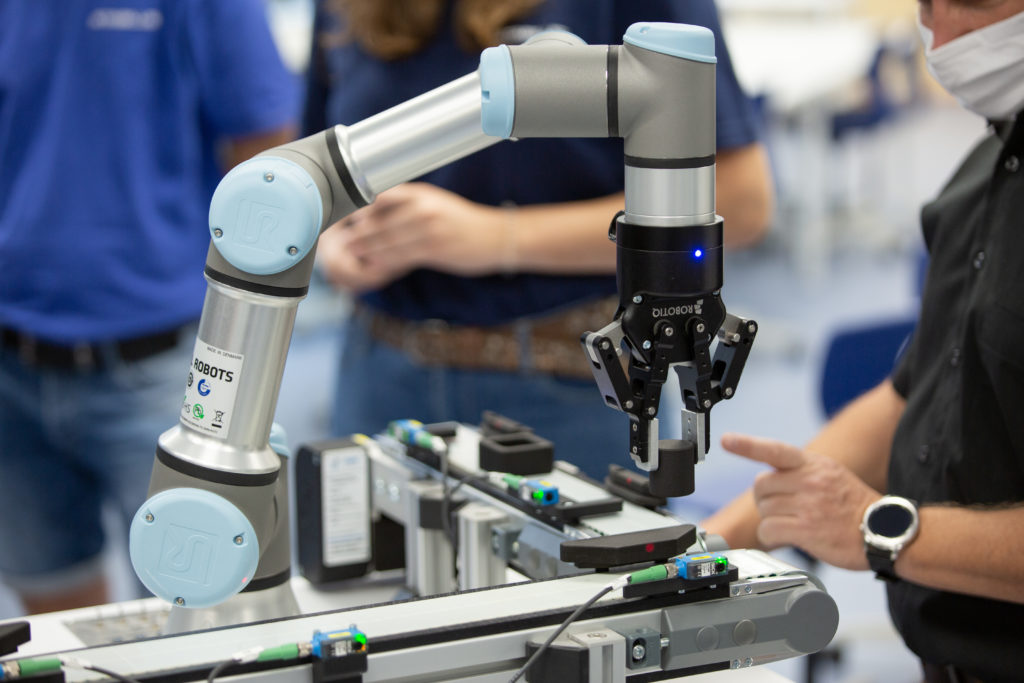
Modernizing training in SMEs
With the new concept universal robot addresses itself beside vocational schools also to small and medium-size training enterprises. These companies play a central role in the German apprenticeship system: around 80 percent of apprentices in Germany complete their training there. Thanks to the space-saving, profitable lightweight robotics from Universal Robots, automation is now also affordable for SMEs. The industry pioneer has thus sustainably lowered access barriers. Since entering the market in 2008, Universal Robots has sold more than 46,000 Cobots that make the work of employees in companies around the world easier.https://www.universal-robots.com/de/education/
Translated with www.DeepL.com
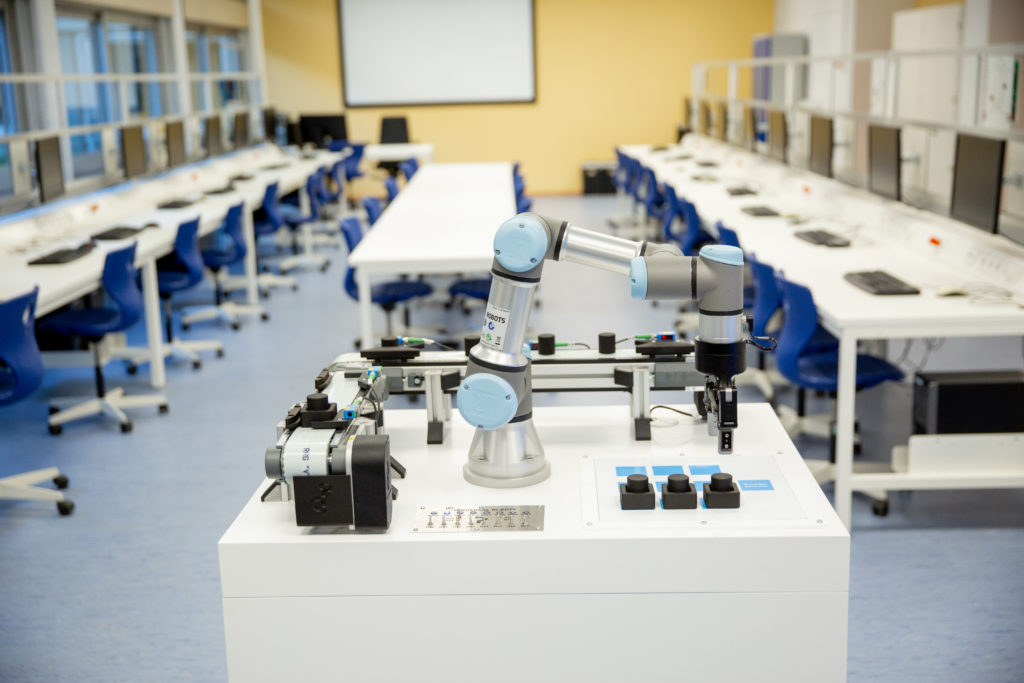
Ein Roboter, der Nässe trotzt: der neue robolink IP44 von igus
igus entwickelt Low Cost Automation Lösung aus Kunststoff und Edelstahl für Umgebungen mit Spritzwasser
Köln, 16. November 2020 – Feuchte und nasse Umgebungen können schnell die Mechanik eines Roboters angreifen. Daher hat igus jetzt eine Low Cost Automation Neuheit auf den Markt gebracht, die leicht und kostengünstig einfache Aufgaben umsetzen kann und gleichzeitig mit Spritzwasser in Kontakt treten darf.
„Aus den Kundengesprächen konnten wir erfahren, dass viele Anwender eine wirtschaftlich erschwingliche Lösung suchen, die auch in Spritzwasser-Umgebungen einsetzbar ist, zum Beispiel wenn Emulsionen entfernt werden müssen“, erklärt Alexander Mühlens, Leiter Automatisierungstechnik bei der igus GmbH. „Wir haben dann einen Roboter entwickelt, der hierfür geeignet ist.“ Der neue robolink macht sich die Vorteile von zwei Materialien zunutze: Edelstahl und Hochleistungskunststoffe. Dabei bestehen die Verbindungselemente, erstmalig bei einem igus Roboter, aus rostfreiem V2 oder V4 Edelstahl und die Gelenke aus den bewährten schmiermittelfreien Tribopolymeren. Der Anwender benötigt keine teure zusätzliche Abdeckung, denn durch den Verzicht auf eine Schmierung in den Gelenken kann sich kein Fett auswaschen und in die Umwelt gelangen. Der neue robolink erfüllt mindestens die Schutzklasse IP44 und ist damit beständig gegen Spritzwasser. Er hat kann bis zu drei Kilogramm tragen, besitzt mit fünf Achsen eine Reichweite von 790 Millimetern und setzt 7 Picks die Minute um. Durch den Einsatz von Motoren mit Encodern der Schutzklasse IP65 lässt sich der Roboter problemlos auch zur Inspektion im Außenbereich einsetzen. Weitere Anwendungsszenarien sind zum Beispiel in der Lebensmittel- und Getränkeindustrie, im Bereich Chemie und Pharma oder auch der Tank- und Behälterreinigung möglich.
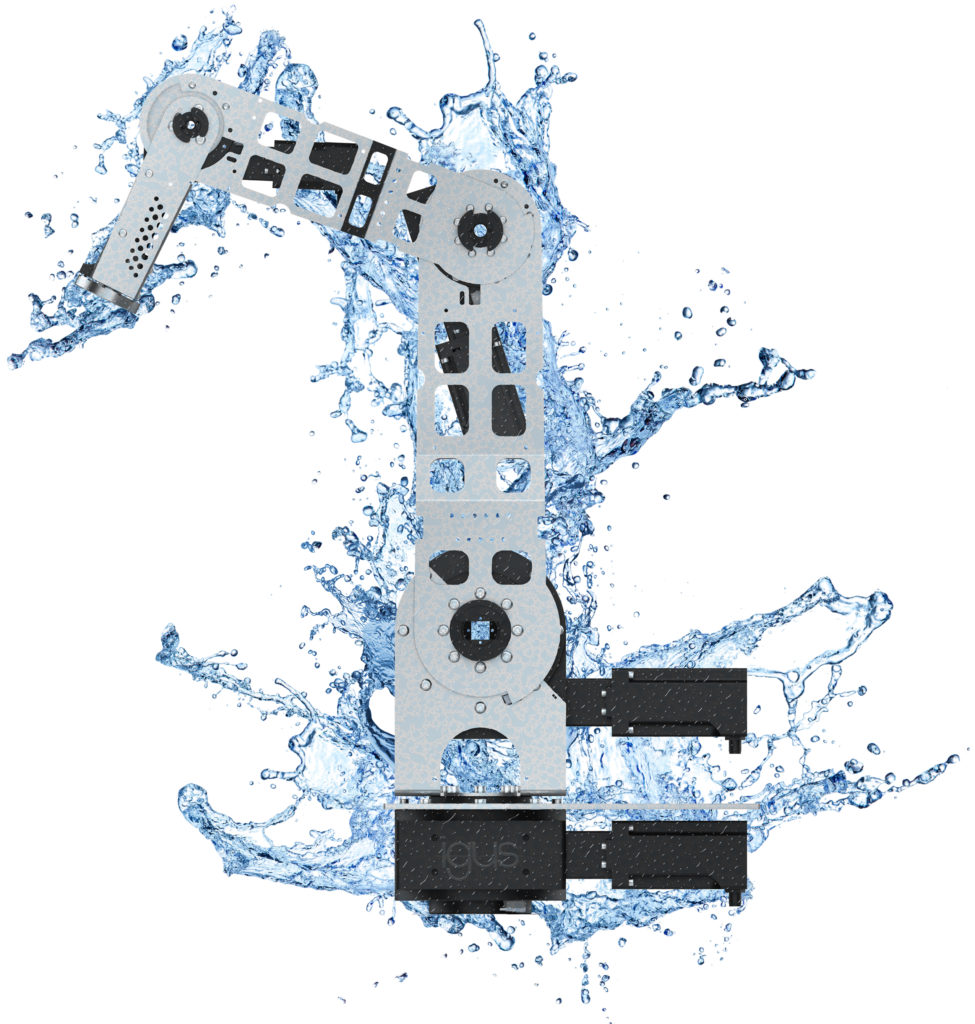
Sehen Sie jetzt den spritzwassergeschützten robolink mit Alexander Mühlens im Video: https://youtu.be/WXm8gO6QxWQ
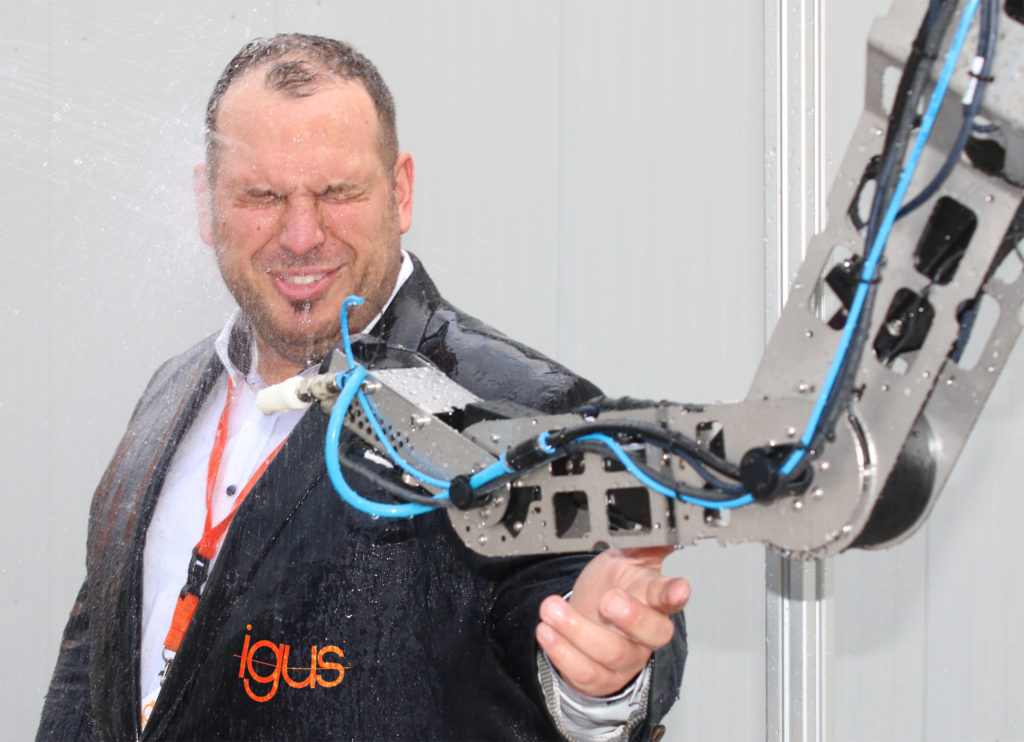
Sparklekits
Kids learn coding with the new Sparklekits, unleashing their creativity through a great building experience.
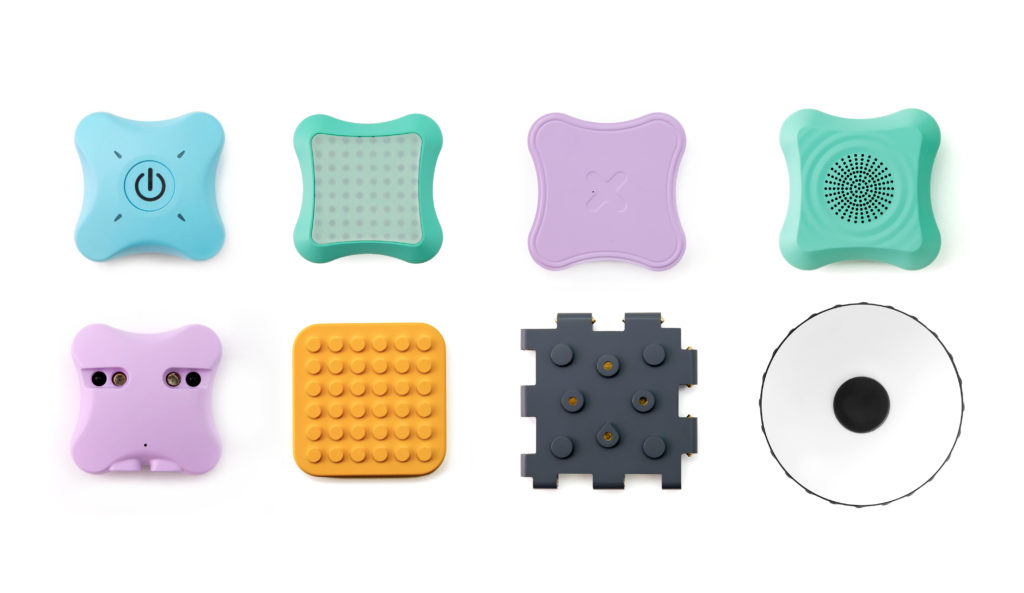
What is Sparklekits?
Sparklekits is a STEM kit with a set of modular magnetic blocks & puzzles that promotes educational discovery through open-ended play and hands-on experience using advanced technology. It is extremely easy to assemble and super intuitive to use. It is a better and more fun STEM education tool that integrates building, learning, coding and play.
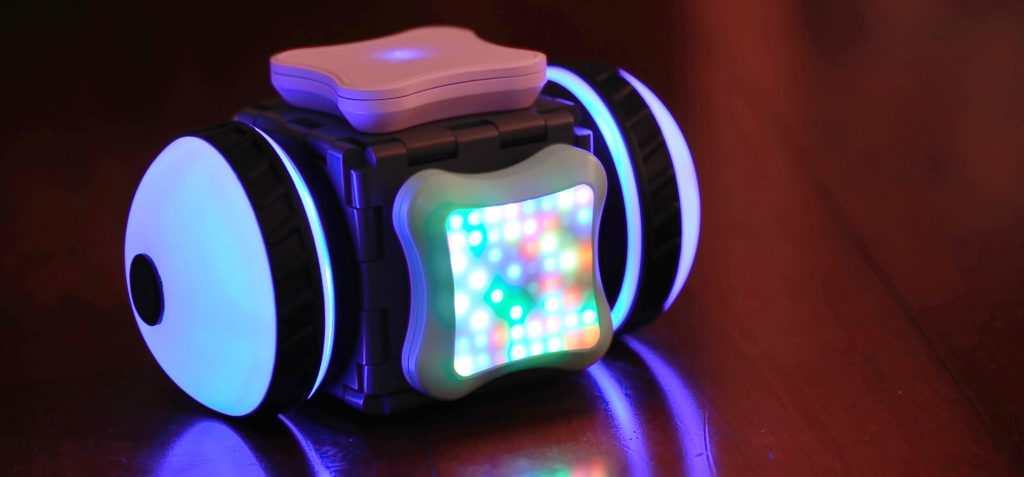
Advanced Design
Sparklekits breaks down complicated engineering into easy-to-assemble, functional magnetic modular blocks that children can use without using any cables, screws or tools. Kids can’t get it wrong, creating an environment that invites experimentation and creativity while building confidence.
These building blocks are infused with magical, seamless technology that allows kids to code, build, and explore at their own pace. Built-in games and challenges let kids between 5-12 learn through play, and it’s fully LEGO-compatible!
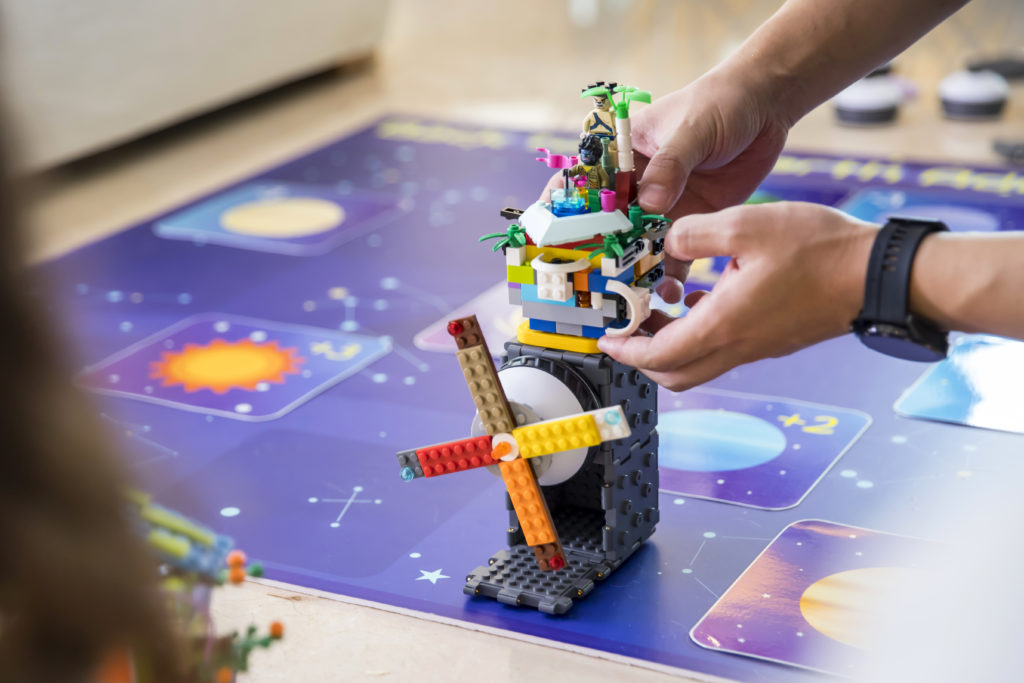
Launching on Kickstarter on 10th Nov 2020
Funding Goal: USD $5,000
Funding Amounts: USD $129.95 to receive one of the first 50 Sparklekits set (shipping APR 2021)
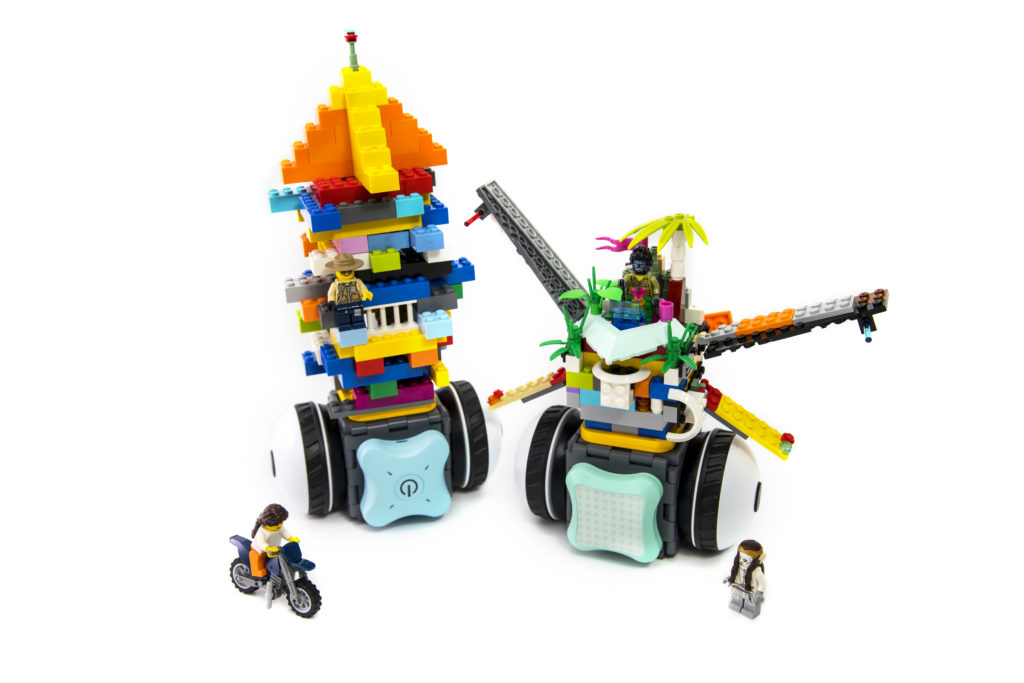
VISTA Drone by Door Robotics Takes Flight on Kickstarter With a Fully Integrated 360-degree Camera
COLLEGE PARK, MD. (PRWEB) OCTOBER 21, 2020
Capture every angle from the sky with VISTA Drone, the first integrated 360-degree camera drone, from Door Robotics, which launched on Kickstarter today. Eliminating the need to jury-rig expensive cameras to gimbals and drones, VISTA Drone makes it easier than ever before to capture precise, beautiful, and captivating images from above.
No drone on the market today records 360-degree video without also capturing the drone itself in the frame. To create immersive content, aerial videographers and photographers have had to build unsafe custom rigs, attach third-party cameras or do extensive editing to capture high-quality footage. Not anymore.
VISTA Drone is the market’s first drone with a fully integrated 360-degree camera. It creates immersive aerial video without seeing the drone in every frame. In addition to its innovative design, the VISTA Drone also leverages autonomous navigation to learn, map, and adapt to any environment indoors or outdoors. Obstacle detection senses objects around the drone and keeps it from crashing during flight, letting the operator focus on getting the shot.
“I believe drone technology is the way of the future,” said Joshua Ermias, CEO of Door Robotics. “The VISTA Drone makes it significantly easier to create awe-inspiring, immersive content from every angle.”
According to Business Insider, the drone industry is expected to grow to more than $63 billion by 2025 with consumer drone shipments hitting 29 million next year. Enterprise and recreational-use drones are exploding in popularity as their uses become more widespread. From insurance to disaster relief, construction, journalism, and real estate, businesses are thirsting for ways to capture video and photographs of hard-to-reach locations or innovative viewpoints. The VISTA Drone offers what no other drone does: a 360-degree, “invisible drone” POV.
In addition to autonomous navigation, the VISTA Drone features a “follow me” intelligent flight mode that leverages GPS transmitter technology to turn the drone into a hands-free aerial camera crew. Object recognition detects small and large objects for premier pixel clarity. The VISTA Drone can take off and land on its own, creating a safer flying experience for any operator. If the battery should run low during flight, it will automatically begin to descend and return home.
The VISTA Drone’s 360-degree camera offers 8k resolution, a 78 Mbps bit rate, and captures 30 frames per second of video. Real-time video stitching is made possible with the camera’s two lenses—no more extensive editing to mend footage. VISTA Drone makes capturing 360-degree images and video automatic and precise.
VISTA Drone is available to pre-order at a significant discount starting at $899. Funds from the Kickstarter campaign will be used to manufacture the drones in America, and units will ship by April 2021. To pre-order, visit pr.go2.fund/doorrobotics.
About Door Robotics
Door Robotics believes drones are the future. Beginning in 2016, Door Robotics set out to improve the way people capture aerial video with drones. A grant from the University of Maryland’s Academy for Innovation and Entrepreneurship jumpstarted Door Robotics, and the team used that funding to create its alpha prototype. After tooling, software development, and testing, the VISTA Drone is ready for manufacturing. For more information, visit http://www.doorrobotics.com.
LEGO MINDSTORMS: Pass the Build – Tricky (Robot Inventor 51515)
The Robotmak3rs have had a lot of fun recently playing with the new LEGO Robot Inventor kit (51515), released last week. Watch as Tricky is passed around the world to be built by a few of us.
Several RobotMak3rs from around the world take it in turns to pass the build of Tricky from the LEGO® MINDSTORMS 51515 Robot Inventor kit, released on 15th October 2020. Thanks goes out to LEGO and the RobotMak3rs RLOC for supporting this project. RobotMak3rs Community Facebook page: https://www.facebook.com/robotmak3rs/
Music: „Small Guitar“ from Bensound.com
And Robots-Blog is also part of this video 😉
